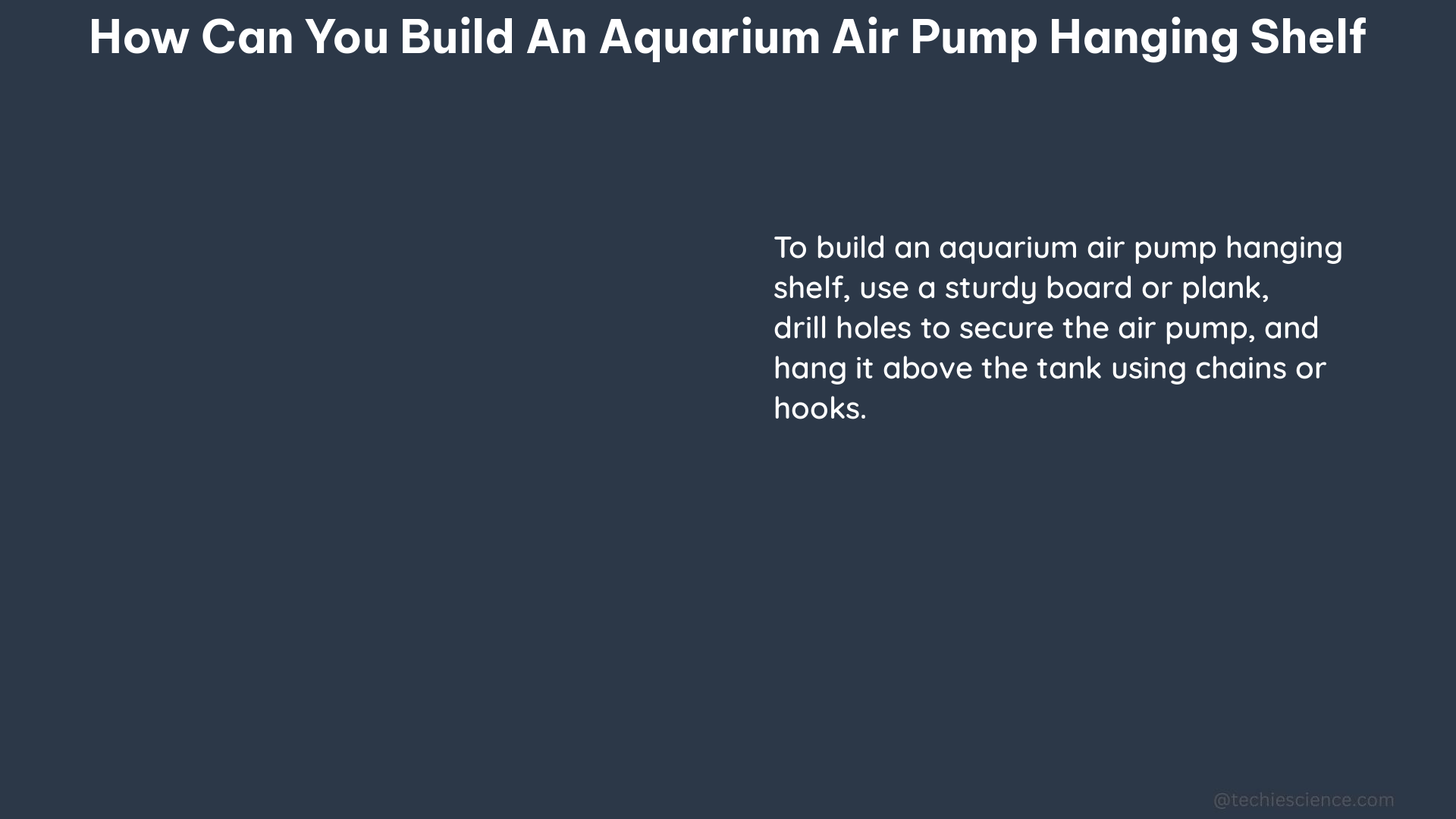Building an aquarium air pump hanging shelf is a practical and space-saving solution for aquarium enthusiasts. This guide will provide you with a detailed, step-by-step approach to constructing a sturdy and reliable shelf that can securely hold your air pump and any associated accessories.
Materials and Tools Required
To build an aquarium air pump hanging shelf, you will need the following materials and tools:
Materials:
- Wooden board or PVC sheet (at least 1 inch thick and 6 inches wide)
- Screws or bolts (length will depend on the thickness of the wall or aquarium stand)
- Zip ties or other fasteners
Tools:
- Saw (hand saw, power saw, or miter saw)
- Drill
- Drill bits
- Measuring tape
- Pencil
- Level
Determining the Shelf Dimensions

The size of your aquarium air pump hanging shelf will depend on the size of your air pump and the number of accessories you plan to mount on it. As a general guideline, the shelf should be at least 1 inch thick and 6 inches wide to provide a stable platform.
The length of the shelf will vary based on your specific needs. To determine the appropriate length, measure the dimensions of your air pump and any additional accessories, then add a few inches to allow for proper placement and spacing.
Here’s a table to help you determine the ideal shelf dimensions:
| Air Pump Size | Shelf Width | Shelf Length |
|---|---|---|
| Small (up to 10 gallons) | 6 inches | 8-10 inches |
| Medium (10-30 gallons) | 6 inches | 12-16 inches |
| Large (30+ gallons) | 6 inches | 16-24 inches |
Cutting the Shelf Material
Once you have determined the appropriate dimensions for your aquarium air pump hanging shelf, it’s time to cut the material. If you are using a wooden board, you can use a hand saw, power saw, or miter saw to cut it to the desired length. If you are using a PVC sheet, you can use a circular saw or a jigsaw to cut it to size.
Be sure to measure and mark the cutting lines carefully to ensure a precise and clean cut. It’s also a good idea to use a straightedge or a clamp to guide the saw and prevent any uneven or jagged edges.
Drilling the Mounting Holes
After cutting the shelf material to size, you will need to drill holes at the ends of the shelf to allow for mounting. The size and number of holes will depend on the type and size of the screws or bolts you plan to use.
As a general guideline, you should drill at least two holes, one near each end of the shelf. The holes should be large enough to accommodate the screws or bolts you will be using, but not so large that the fasteners will be loose or unstable.
Here are some recommended hole sizes based on common screw or bolt sizes:
-
8 screws: 5/32-inch diameter holes
- 1/4-inch bolts: 9/32-inch diameter holes
- 5/16-inch bolts: 11/32-inch diameter holes
Be sure to measure the distance between the holes to ensure that they align with the mounting points on your wall or aquarium stand.
Mounting the Shelf
With the shelf material cut and the mounting holes drilled, it’s time to attach the shelf to the wall or aquarium stand. Position the shelf in the desired location and use the pre-drilled holes as a guide to mark the mounting points on the wall or stand.
Drill pilot holes at the marked locations, then secure the shelf in place using the appropriate screws or bolts. Make sure the shelf is level and firmly attached to the surface.
Securing the Air Pump and Accessories
Once the shelf is mounted, you can place the air pump and any associated accessories on the shelf. Use zip ties or other fasteners to secure the air pump and accessories to the shelf, ensuring that they are stable and won’t shift or fall off.
Consider the placement of the air pump and accessories to optimize airflow and accessibility. You may also want to leave some space on the shelf for future additions or modifications.
Conclusion
Building an aquarium air pump hanging shelf is a straightforward DIY project that can help you save valuable space and keep your air pump and accessories organized and easily accessible. By following the detailed steps and technical specifications outlined in this guide, you can create a sturdy and reliable shelf that will serve your aquarium needs for years to come.
Remember to always prioritize safety and use the appropriate tools and techniques when working on any DIY project. If you have any doubts or concerns, it’s always best to consult with a professional or seek additional guidance.
Happy building!
References:
- Aquarium Air Pump Hanging Shelf on PlanetCatfish Forum
- Air Pump for Fish Rack on Planted Tank Forum
- Air Pump Mounted Vertically on FishLore Aquarium Forum
